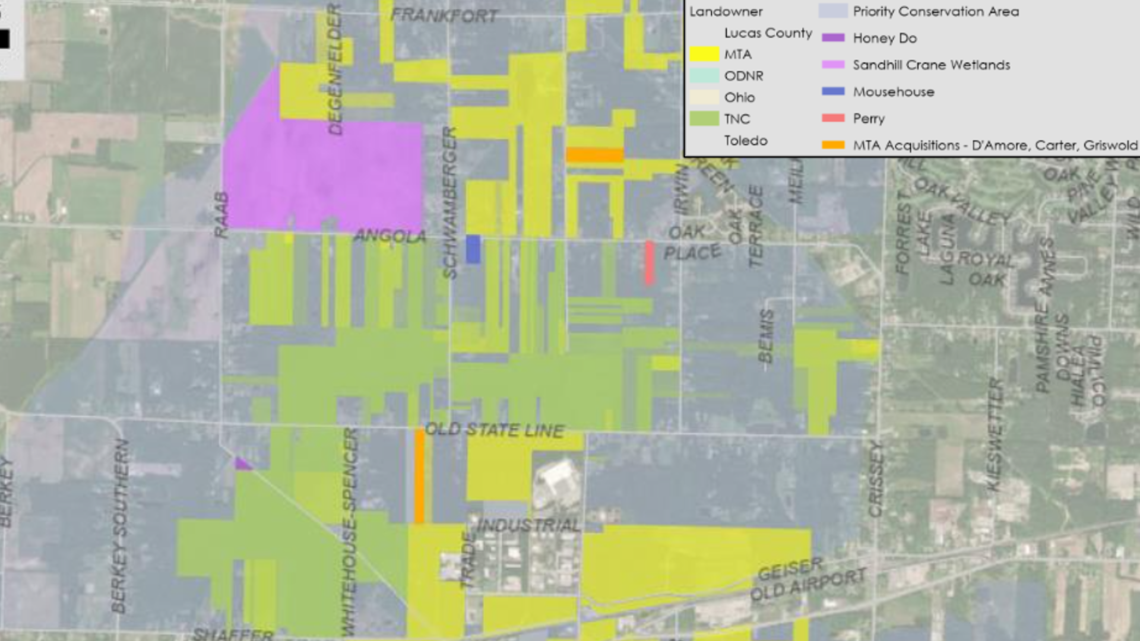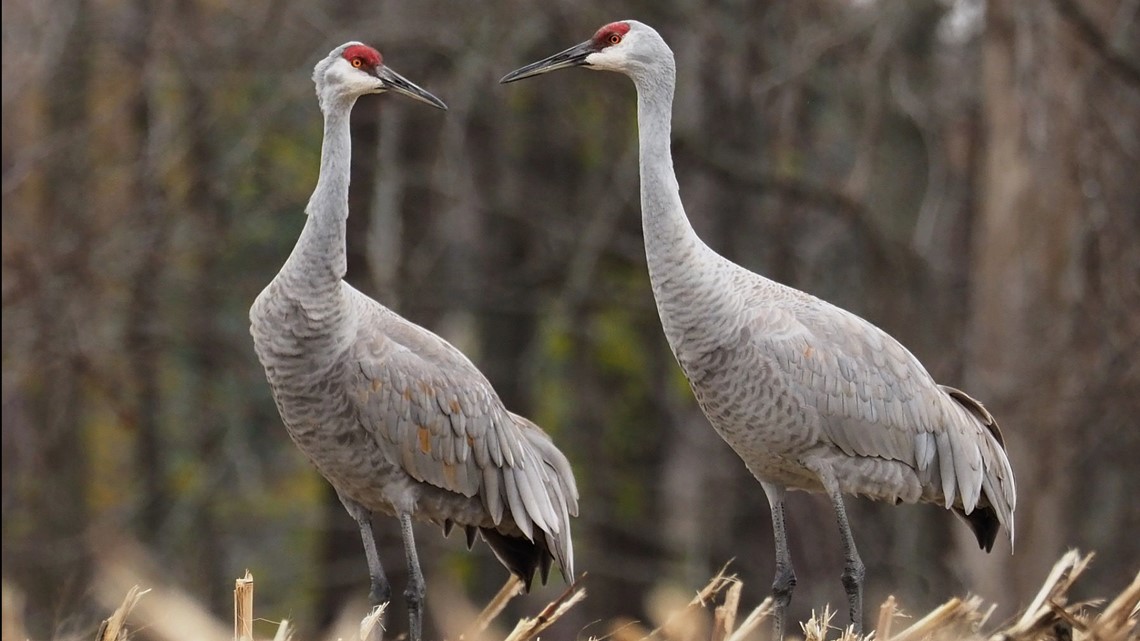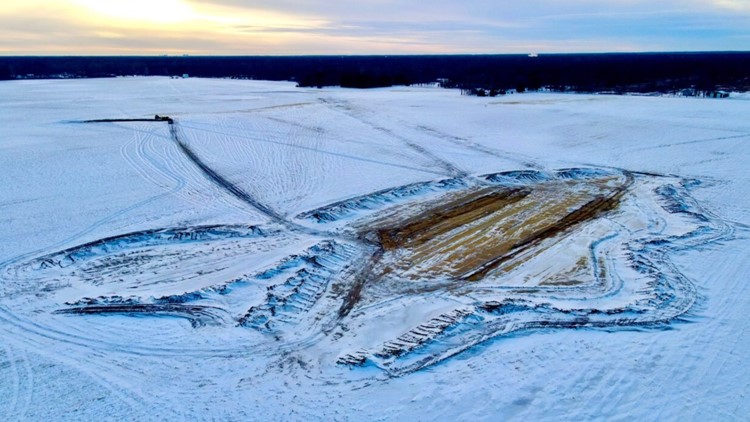BERKEY, Ohio — A recent groundbreaking by a global conservation organization is providing a major boost to wetlands restoration efforts across the Western Lake Erie Basin.
The 280-acre Sandhill Crane Wetlands project will restore a portion of the historic Irwin Wet Prairie, which played a role in naturally treating nutrient runoff into nearby streams which led to Lake Erie. The Irwin Wet Prairie was once over 10 miles long and provided a habitat for songbirds, waterfowl, amphibians and reptiles.
“Today, less than 5% of all wetlands and marshes in the western Lake Erie basin remain, and their removal has resulted in profound impacts on water quality, most notably the annual harmful algal blooms in Lake Erie,” Alexis Sakas, natural infrastructure director for The Nature Conservancy in Ohio, said in a press release Tuesday.
For over 40 years, The Nature Conservancy, Metroparks Toledo and the Ohio Department of Natural Resources has worked to protect the Irwin Wet Prairie region of Oak Openings. The 280-acre area that will become the Sandhill Crane Wetlands was farmed for decades and frequently flooded.


“The Sandhill Crane Wetlands project will return much needed ‘natural infrastructure’ to the landscape, which provides long-term benefits of flood reduction, cleaner water, wildlife habitat and recreation and tourism opportunities," said Sakas. "Upon completion of the restoration, this site will provide an estimated 300 million gallons of additional stormwater storage capacity thereby reducing flood impacts and enabling replanted native vegetation to absorb nutrients that would otherwise be carried downstream to the lake."
The name of the project reflects optimism that sandhill cranes will once again nest in the Oak Openings region. The cranes have not successfully nested in the area in over 70 years.


The initial restoration phase will take place over the next year, providing research and education opportunities for landowners, students and partners according to The Natural Conservancy.
Because the location is within the Maumee Area of Concern, it is considered a priority project for wildlife habitat and funding was provided by the Maumee Area of Concern and Water Resource Restoration Sponsor Programs.
RELATED VIDEO:



